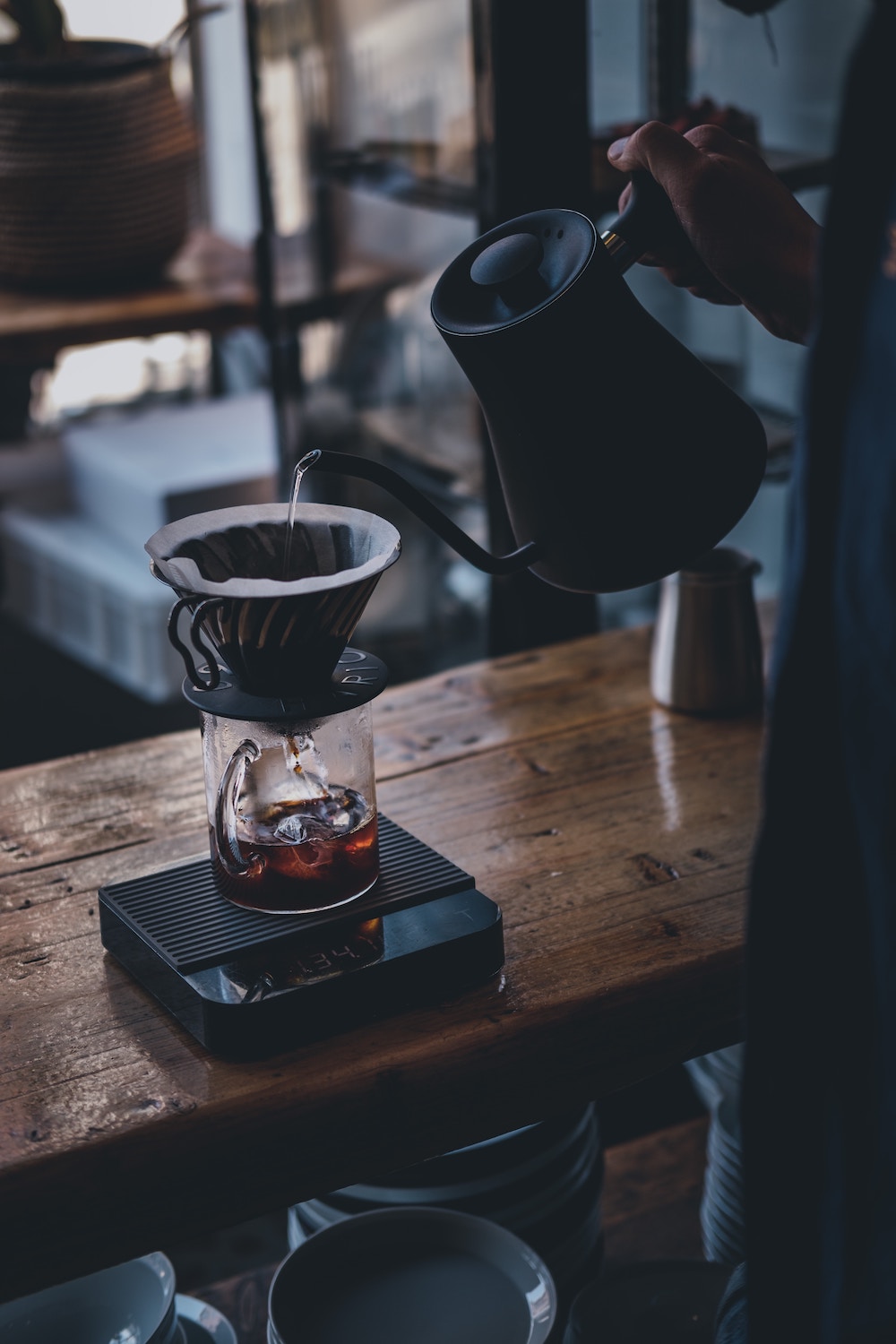It’s hard to miss the ever-increasing popularity of pour-over coffee in cafes around the world. Some might have even seen it being meticulously prepared by a barista and wondered, “What’s the deal with pour-over coffee?” Let’s dive into the world of pour-over, its origins, the science behind its extraction, and its unique taste profile.
What is Pour-Over Coffee?
Pour-over coffee is a method of brewing coffee where water is manually poured over coffee grounds in a filter. Unlike machines that push water through the coffee, this method relies on gravity and gives the brewer control over the water flow and temperature, allowing for a more personalized cup.

Popularity and Origins
The pour-over method has roots in various parts of the world, but it’s most prominent in countries like Japan, where attention to detail and ritual are deeply ingrained in the culture. Japanese coffee shops, or “kissaten”, have popularized this brewing method for its precision and the delicate flavors it extracts. However, it’s not just an Asian phenomenon. Over the years, specialty coffee shops in the U.S., Europe, and other parts of the world have adopted and championed pour-over coffee for its clarity and nuanced taste.
Blue Bottle Coffee is a leader in “third-wave” coffee shops, and you can see how they use pour-over in their Kyoto, Japan location.

The Extraction Process
The magic of pour-over coffee lies in the extraction process. Here’s a breakdown:
- Bloom: Once the hot water hits the coffee grounds, they release carbon dioxide in a process known as “blooming.” This step ensures even water flow and extraction later on.
- Controlled Pour: A slow, spiral pour ensures that all coffee grounds are saturated evenly. This manual control prevents over-extraction (bitterness) or under-extraction (sourness).
- Gravity: As the water seeps through the coffee grounds, it extracts the flavors and aromas, dripping down into the vessel below.
The pour-over method offers a more even extraction than, say, the traditional drip machine or a French press. The result is often a cleaner, more refined cup that highlights the coffee’s inherent flavors.
Flavor Differences
Because of the controlled extraction process, pour-over coffee tends to have a clearer flavor profile. If you’re drinking a single-origin coffee (beans from one location), the pour-over method can highlight specific flavor notes, from fruity undertones to floral aromas. In contrast, methods like the French press produce a fuller-bodied coffee with more oils, which can mask some of these delicate flavors.
Time and Worth
A pour-over does require more time and attention than pushing a button on a machine. Typically, the entire process can take anywhere from 3 to 5 minutes, depending on factors like grind size and pouring technique.
Is it worth it? That’s subjective. For those who appreciate the craft of coffee-making and savoring the subtle flavors in their brew, absolutely. But if you’re someone who wants a quick caffeine fix in the morning, it might feel cumbersome.
Here is a short video to give you an idea of the process:
Conclusion
Pour-over coffee is more than just a brewing method; it’s an experience. For many, the ritualistic nature of making pour-over coffee is a meditative process that connects them to the very essence of the bean. While it may not be for everyone, those who embark on the journey often find a deeper appreciation for the complexities and nuances that coffee has to offer.


